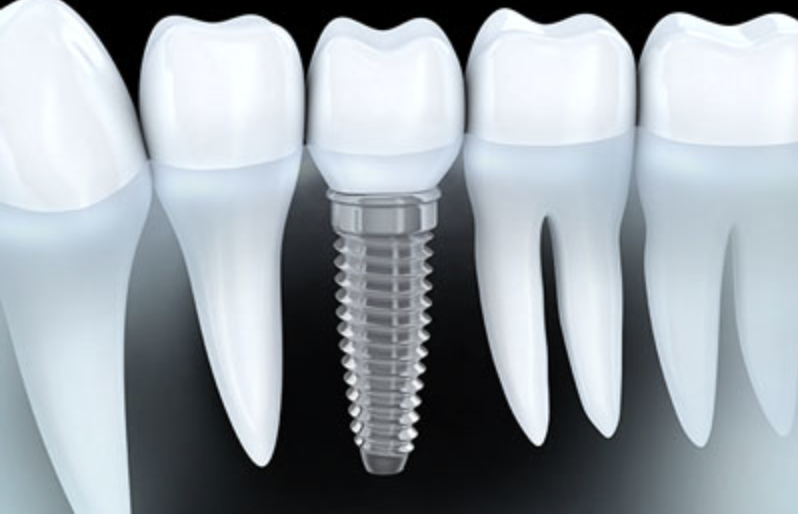
Replacing missing teeth with dental implants has never been easier and more precise for the patient AND the doctor to complete thanks to digital dentistry!
What is a dental implant?
Dental implants are a permanent solution for patients that have missing teeth. Implants act similar to an artificial tooth root and are placed into the jawbone. The jawbone heals around the implant creating a strong base. Implants are made of titanium, are durable and long lasting, making them a popular choice for many patients. Once the implant is healed an abutment or connector piece is used, and a crown is affixed on top.
Implant Crowns are custom made to match the shape, size, and color of your natural teeth.
Implants restore the function of your mouth and jaw, and patients can chew and speak normally. If you are seeking that perfect smile, dental implants may be the right choice for you.
What are the benefits to dental implants?
Improved appearance. Dental implants look and feel like your own teeth. And because they are designed to fuse with bone, they become permanent.
Improved speech. With poor-fitting dentures, the teeth can slip within the mouth causing you to mumble or slur your words. Dental implants allow you to speak without the worry that teeth might slip.
Improved comfort. Because they become part of you, implants eliminate the discomfort of removable dentures.
Easier eating. Sliding dentures can make chewing difficult. Dental implants function like your own teeth, allowing you to eat your favorite foods with confidence and without pain.
Improved self-esteem. Dental implants can give you back your smile and help you feel better about yourself.
Improved oral health. Dental implants don’t require reducing other teeth, as a tooth-supported bridge does. Because nearby teeth are not altered to support the implant, more of your own teeth are left intact, improving long-term oral health. Individual implants also allow easier access between teeth, improving oral hygiene.
Durability. Implants are very durable and will last many years. With good care, many implants last a lifetime.
Convenience. Removable dentures are just that; removable. Dental implants eliminate the embarrassing inconvenience of removing dentures, as well as the need for messy adhesives to keep them in place.
(Much thanks to WebMD for this great list!)
How is a dental implant done digitally?
Great question! After a tooth extraction site has healed, the patient returns for an Implant Planning Appointment.
At this appointment, we will take a CBCT scan in order to see 3D images of the patient’s soft tissues, nerve pathways and bone. These images cannot be seen on old fashioned x-ray. This technology aids Dr. Fryer in implant planning placement. In other words, because he has these 3D scans, he can easily and precisely plan exactly where the implant will be placed on surgery day.
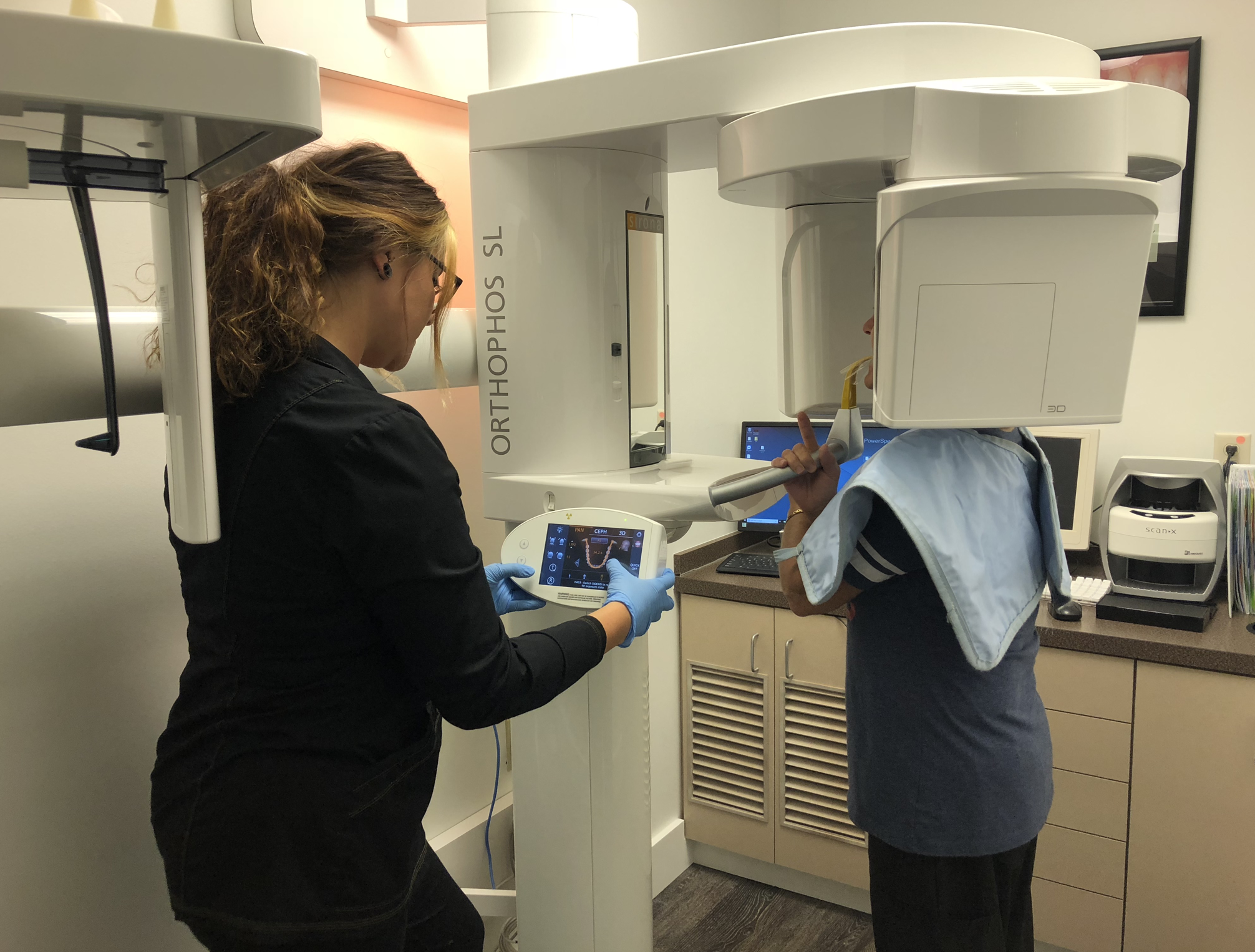
After the CBCT is taken, our team will scan the patient’s mouth with one of our CEREC digital scanners. This digital scan replaces old school messy impressions. In less than 3 minutes, we can obtain all of the images necessary to create a surgical guide to be used on the day of surgery.
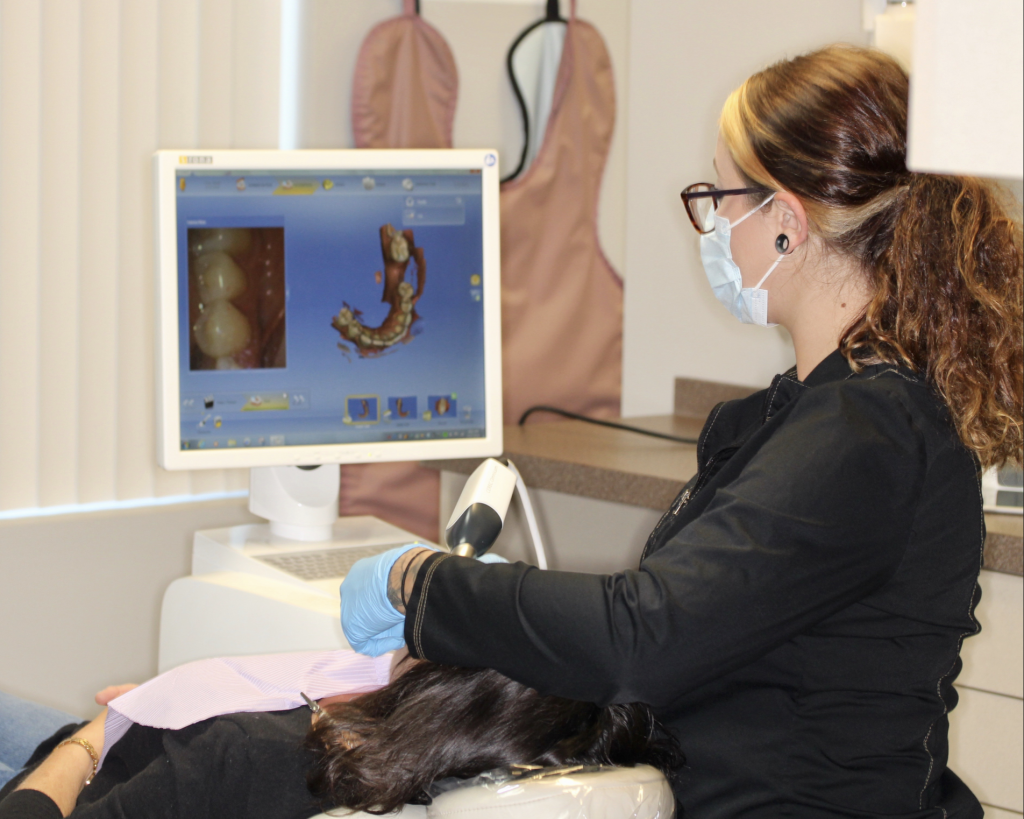
After the CBCT has been taken and the digital scans have been obtained, a member of our team begins to merge all of that data together for Dr. Fryer. Putting all of that info together allows Dr. Fryer to see how the implant will be placed before it happens. It also allows our team to make a surgical guide ahead of the Implant Surgery Appointment. The surgical guide is a customized guide that Dr. Fryer will use so that on the day of surgery he place the implant in the exact spot it needs to be placed in the jaw. All of the preplanning work with the CBCT, the CEREC digital scan, and the customized surgical guide give the patient (and the doctor!) confidence that the implant will be placed safely and accurately.
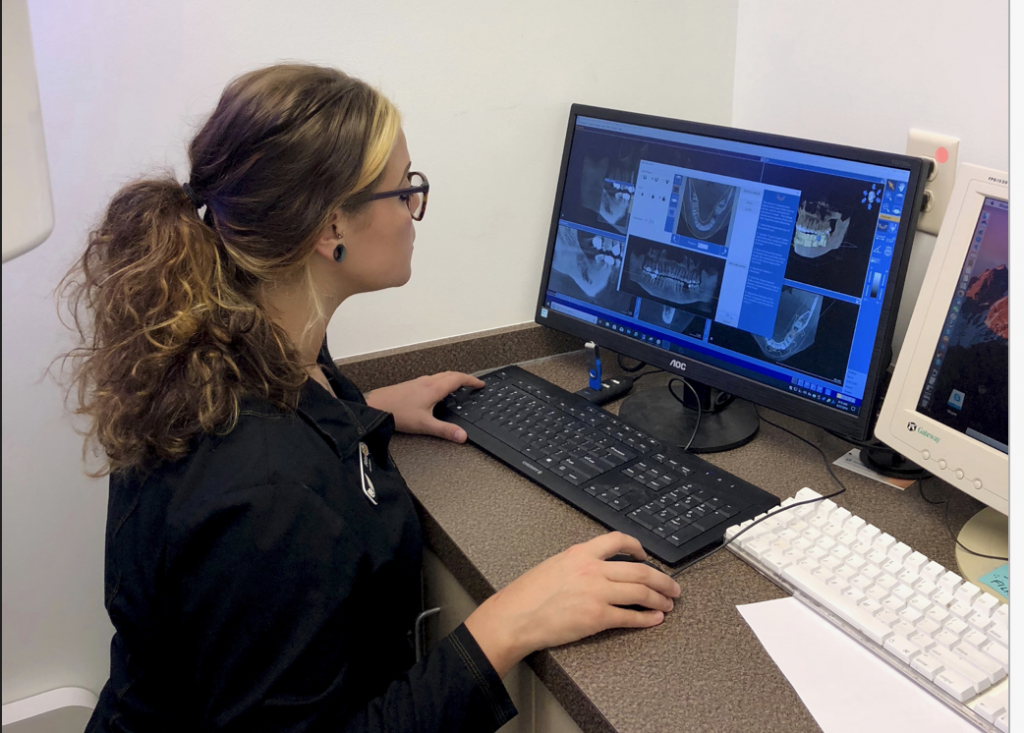
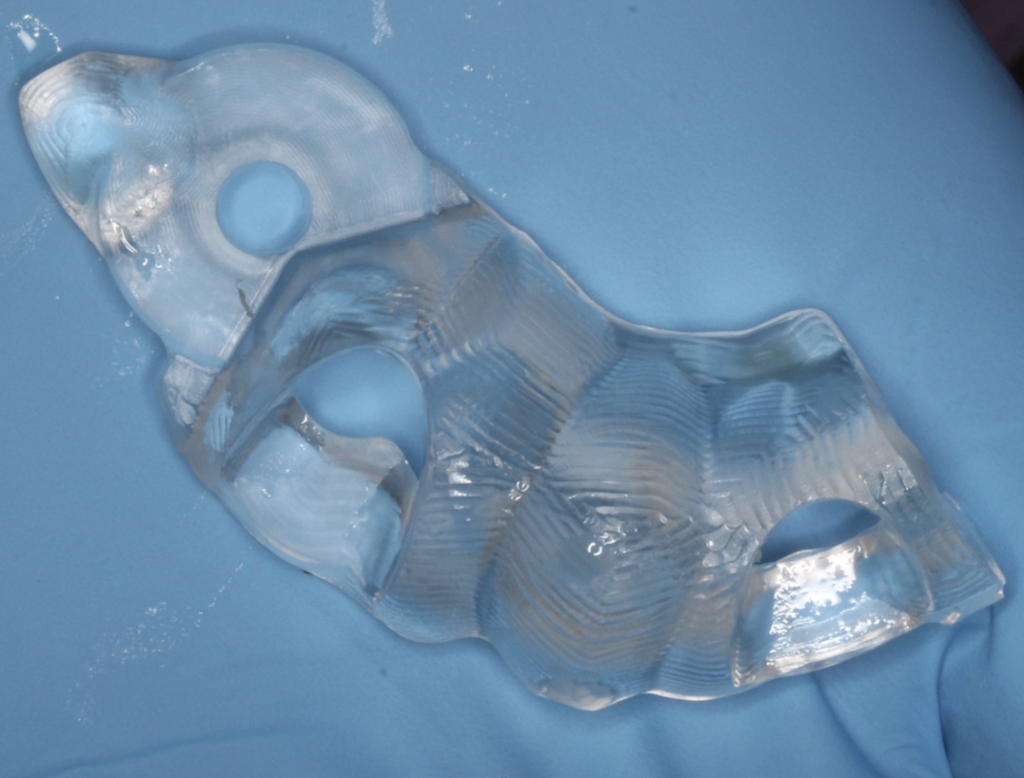
What comes after the Implant Planning Appointment?
About a week or two after the Implant Planning Appointment, the patient will return for the Implant Surgery Appointment. In this less than one hour appointment, Dr. Fryer will surgically place a titanium implant into the jawbone using that customized surgical guide for exact placement. After the implant has been placed, we will once again do some CEREC digital scanning so that we can begin to make an implant crown to the precise size and shape of the patient’s mouth. The crown will be placed after the implant has healed and is fully integrated in the jawbone, about 3 months later.

Image 2: Implant placed in jawbone
Image 3: Implant crown placed after 3-4 months of implant healing.
While the patient is healing for that time, our team will begin to make the implant crown. This of course, is also done digitally. With all of the patients digital scans, we can make a customized implant crown that will allow the patient to smile naturally and chew comfortably.
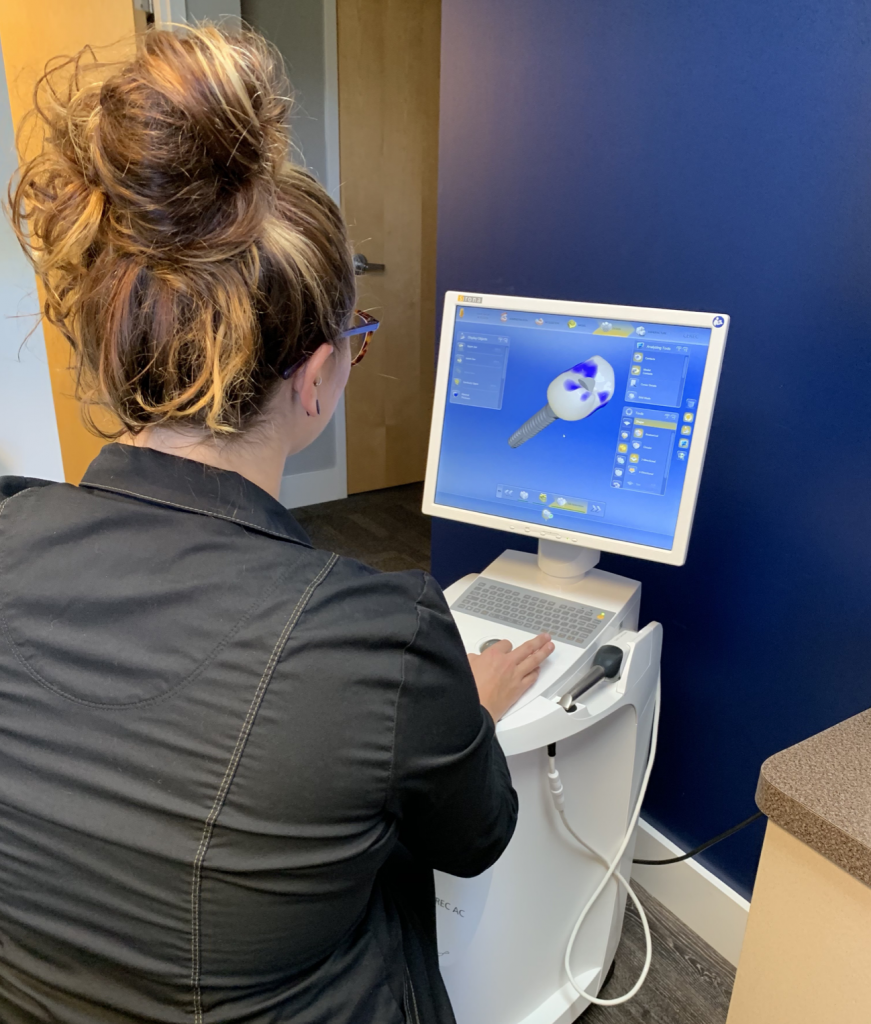
Implant Crown Seat Appointment
Now that the implant has had sufficient time to become integrated and stable into the bone, it is time to seat the implant crown! This quick appointment is the one we’ve all been waiting for! Once that crown is attached to the implant, it looks and functions like a natural tooth! We did it! Can you even tell which one is the implant crown in this pic?
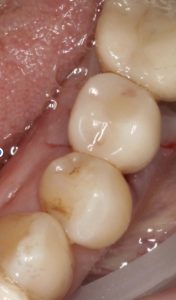
Dr. Fryer is happy because he knows that utilizing digital dentistry is the best and safest way to complete tooth replacement therapy with digital implants.
The patient is happy because he/she can smile AND chew confidently again!
Looks like a win-win!






